A Salor Turkmen kejebe trapping
In HALI 198, Executive Editor of HALI Daniel Shaffer examines a rare and majestic Salor Turkmen ceremonial camel trapping from a Swedish private collection that was offered for sale in December 2018 at Stockholms Auktionsverk.
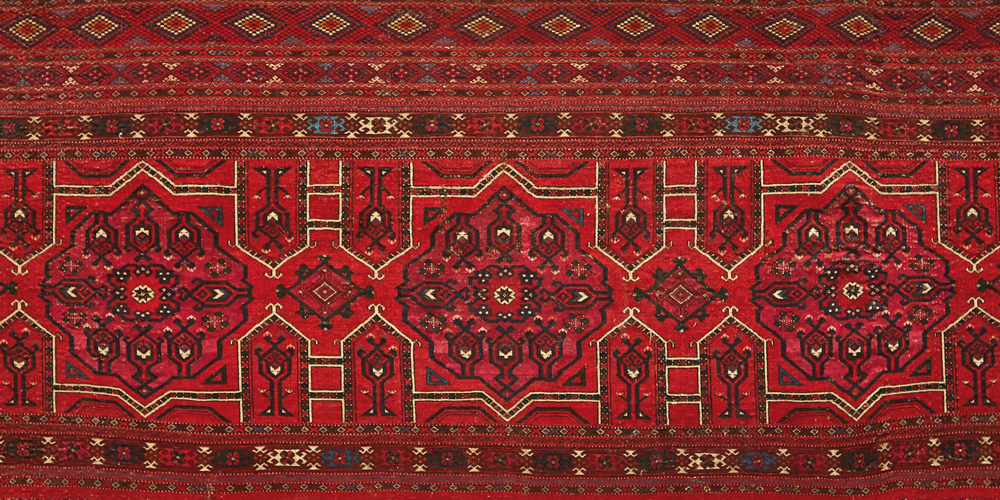
Detail of a Salor Turkmen ceremonial camel trapping from a Swedish private collection that was offered for sale in December 2018 at Stockholms Auktionsverk.
For serious aficionados of Turkmen weaving, this is the real deal: a classic, previously unknown, large-format, three-medallion, darvaza-design kejebe trapping, woven by a Salor woman no later than the mid-1800s (when the tribe declined in importance), and arguably a century or more older.

Detail showing back of the kejebe trapping. The heavily ribbed texture of the back is clearly visible. This feature, which is the result of warp depression (here 40º–50º), is an identifying characteristic of all Salor weaving and contributes to the lush density of the pile.
With strong colour, including details in a clear light blue, and in remarkably good condition, with only minor losses and damage, the piece had been purchased in Sweden in the 1950s by Sverre Eklund (1903-1990) of Örnsköldsvik, and then passed on to his heirs. Latterly it was consigned for sale at Stockholms Auktionsverk on 5 December 2018, at an enticing estimate of just 100,000-150,000 SEK, and was bought against fierce competition by Milanese dealer David Sorgato for $100,000, including 22.5 % premium.
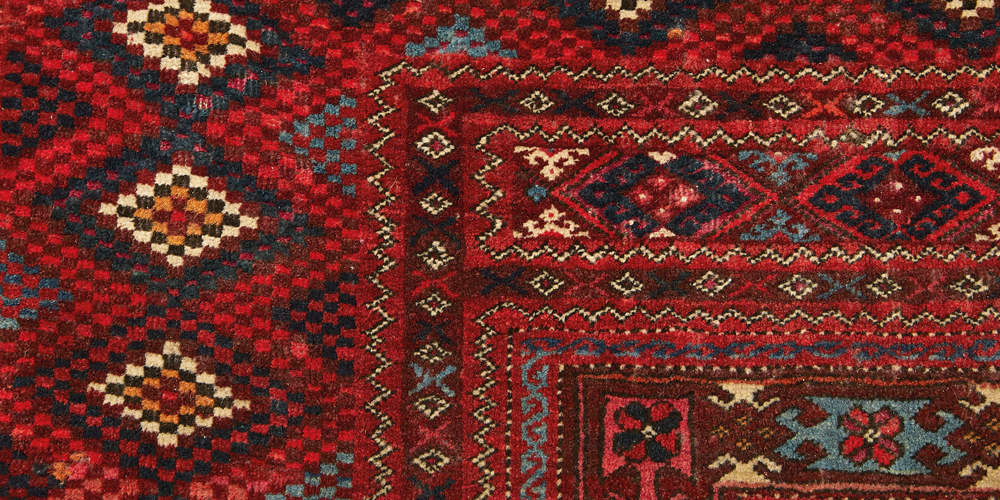
Detail of the kejebe trapping. The heavily ribbed texture of the back (image above) is clearly visible. This feature, which is the result of warp depression (here 40º–50º), is an identifying characteristic of all Salor weaving and contributes to the lush density of the pile.
Asymmetrically knotted on an all-wool foundation with the wool pile open to the left, and typically with substantial highlights in magenta silk, such grand trappings were probably made in the Merv Oasis region around 1800. Jon Thompson, in the 1973 annotated English edition of Bogolyubov’s Carpets of Central Asia, identified these items as camel trappings and was the first to group them and other pieces of similar structure under the Salor label.
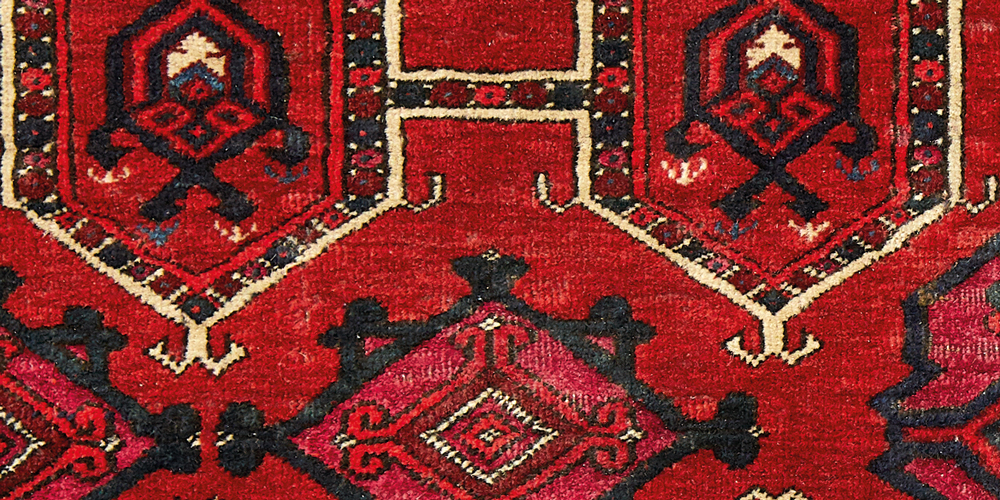
Two of four symmetrically arranged arches (‘gates’) containing guardian figures that separate the ‘Seljuk’ star medallions depict the four gates of the Turkmen universe. The motif recalls the small tent housing the bride on the wedding caravan camel.
No more than two to three dozen of these treasured heirloom weavings are known to have survived. They vary little in design other than in the number of güls (one, two or three), having a codified aesthetic that transcends the whim of tribal weavers, and apparently belie the notion of a nomadic production.
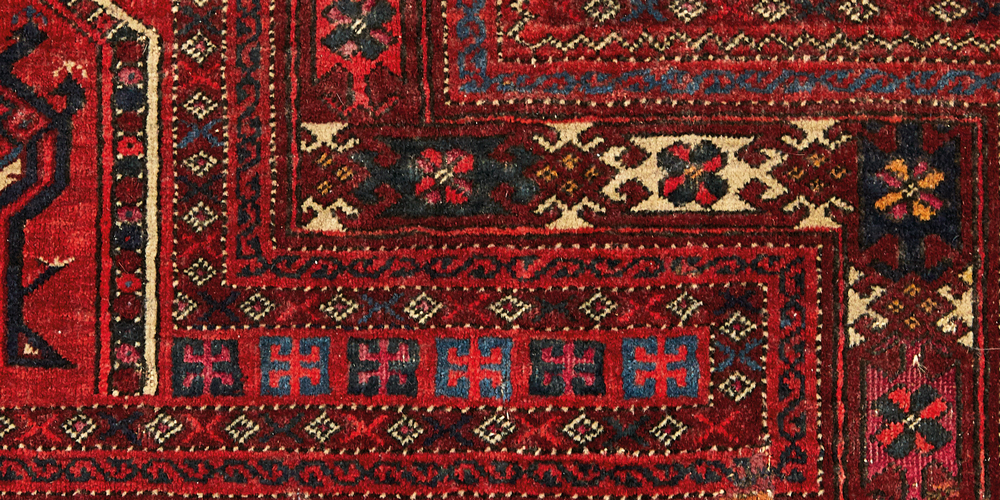
The purpose and meaning of this ‘re-entrant’ border composition, only found on Salor Turkmen trappings of this ilk, remains enigmatic, although the reciprocal figures within the extended panel are familiar from ancient Central Asian artefacts.
Opinions are divided about their use, and as to which way up they should be presented. They are believed to be have been woven in pairs and either carried on the bride’s wedding camel—the kejebe is the wooden litter on the back of a camel in which the bride is sequestered en route to her new family—or used as tent hangings.
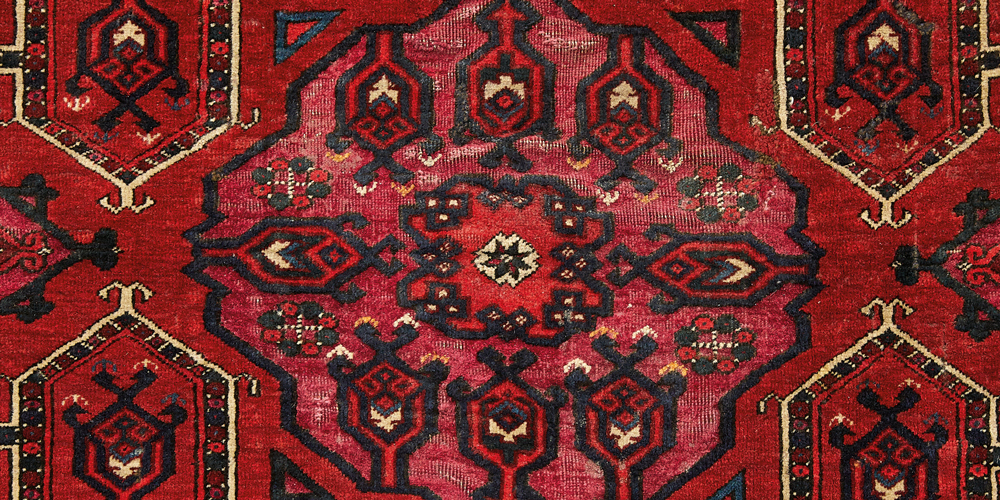
Scalloped central rosettes, with large areas of corroded magenta silk pile, show a ‘Holbein’ endless knot interlace surrounded by guardian figures, contained within eightpointed ‘Seljuk’ stars with cut-off sides. It echoes the outlines and structure of the Salor tribal göl.
The so-called darvaza (gates) design is said by Elena Tsareva to represent a deeply meaningful cosmological image, in which the large eight-pointed ‘Seljuk’ star, composed of a square (symbol of the earth) and a diamond (symbol of the cosmos) can be interpreted as a ‘perfect island’, paradise, or the home of the ancestors, while the four flanking arches depict the four gates of the Turkmen universe, with one of its four guardians within each arch (Turkmen Carpets, The Neville Kingston Collection, 2016, p.30).



























Comments [0] Sign in to comment